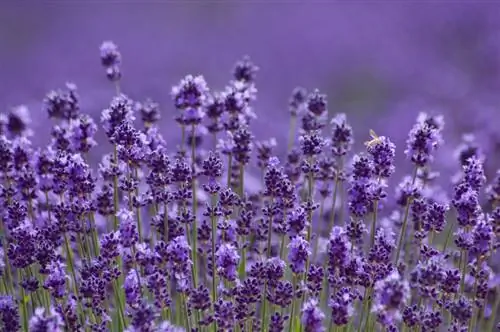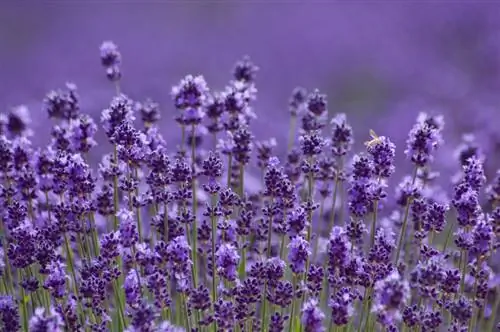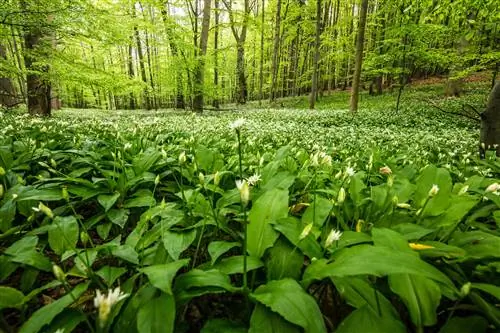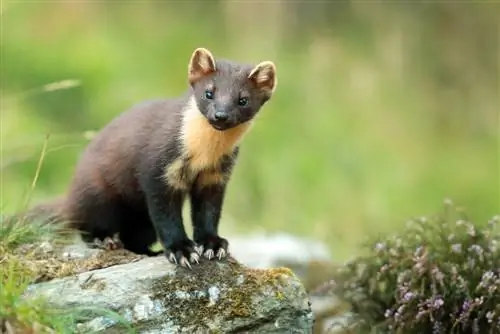- Author admin [email protected].
- Public 2023-12-16 16:46.
- Last modified 2025-01-23 11:20.
Lavender, originally a wild-growing shrub from the Mediterranean region, came across the Alps many centuries ago. Benedictine monks brought the intensely fragrant and extremely useful plant to Central and Northern Europe. Most lavender varieties are quite sensitive to frost, some varieties only thrive in pots, such as the striking lavender with its eye-catching false flowers.

What does a lavender profile look like?
Lavender is an aromatic shrub from the mint family that originally comes from the Mediterranean region. It grows 30 to 100 cm high, blooms from June to September depending on the variety and prefers warm, sunny locations. Lavender is used as a tea, bath additive, spice and for decoration.
Description
Lavender belongs to the mint family (Lamiaceae). Its mostly purple or blue flowers are clustered in axillary spikes and have a strong scent. Depending on the species, the lavender grows between 30 and 60 centimeters high, but can also grow up to 100 centimeters high. Older branches become woody, which is why they should be cut back into the old wood in spring. The shrub blooms - again depending on the variety - between June and September. The strongly scented flowers are a popular meeting place for butterflies, bees and other insects.
History
The ancient Romans used lavender very enthusiastically, but not yet as a medicinal plant. The plant name, on the other hand, indicates its original use as a bath additive. The Latin word “lavare” means “to wash”. It was only when wandering Benedictine monks brought the herb across the Alps that it became drastically more important. From then on, lavender was grown in both monastery and farm gardens. Hildegard von Bingen, the famous abbess and healer of the High Middle Ages, did not think too much of the Mediterranean plant, although the herbal fathers of the late Middle Ages - such as Hieronymus Bock - saw things differently. For a long time, lavender was considered protection against vermin and thus against infectious diseases.
Origin and distribution
Lavender grows primarily where it is warm, sunny and dry. In its southern European Mediterranean home, the medium-sized shrub thrives primarily on rocky and dry surfaces. Today the numerous varieties of this species are at home throughout Western and Northern Europe.
Care
Lavender is a very undemanding plant that prefers to grow in stony soil and does not require much irrigation water or fertilizer. The only important thing is that the perennial is cut back to approx. 30 centimeters immediately after flowering. Otherwise it becomes woody and becomes unsightly.
Harvesting and storage
Lavender flowers should be harvested quickly as soon as all the flowers on a spike have bloomed. To ensure that they retain their scent and color, they should definitely be dried.
Usage
The fragrant herb can be used in many different ways:
- as tea or in tea blends
- in sleeping and herbal pillows (e.g. together with lemon balm, hops or rose petals)
- as a bath additive
- as a spice
- for garnishing dishes.
The dried flowers, the young leaves and the oil are used.
Tips & Tricks
Lavender sugar is ideal for aromatically sweetening food and drinks. All you have to do is crumble the dried lavender flowers and mix them with sugar. It is best to store the mixture in an airtight container.






